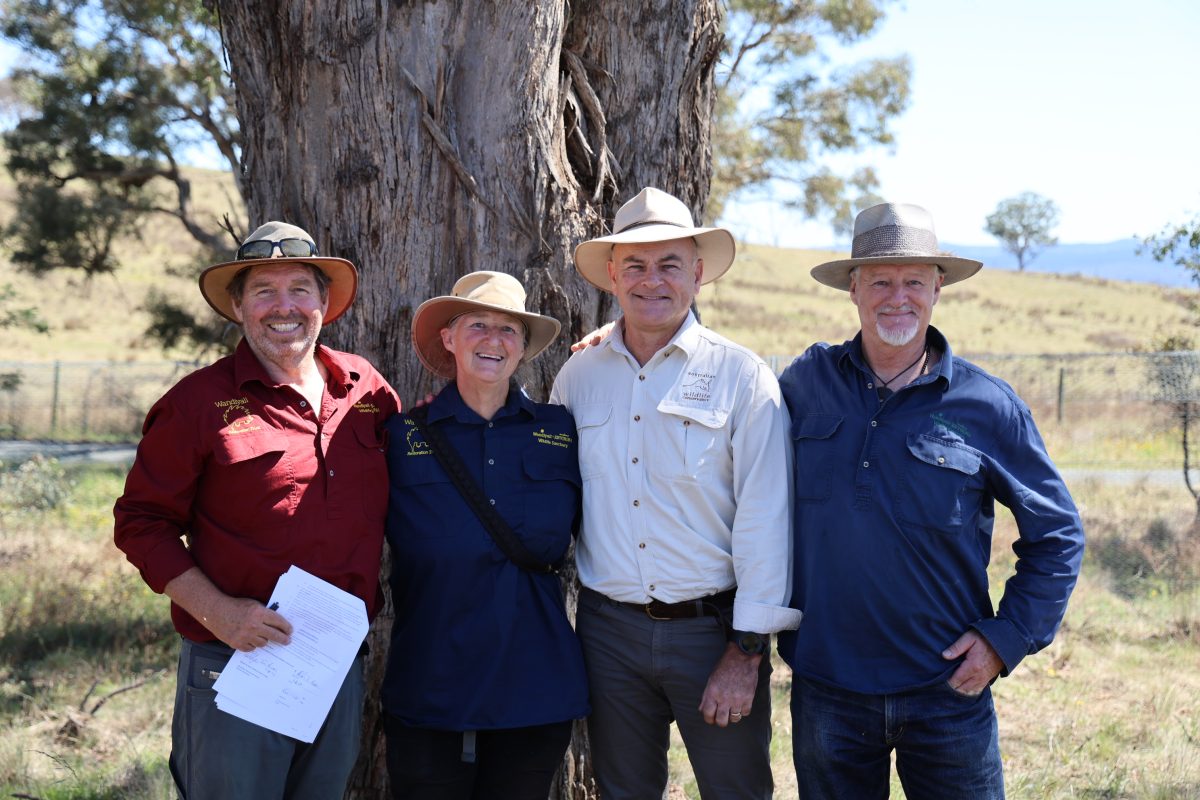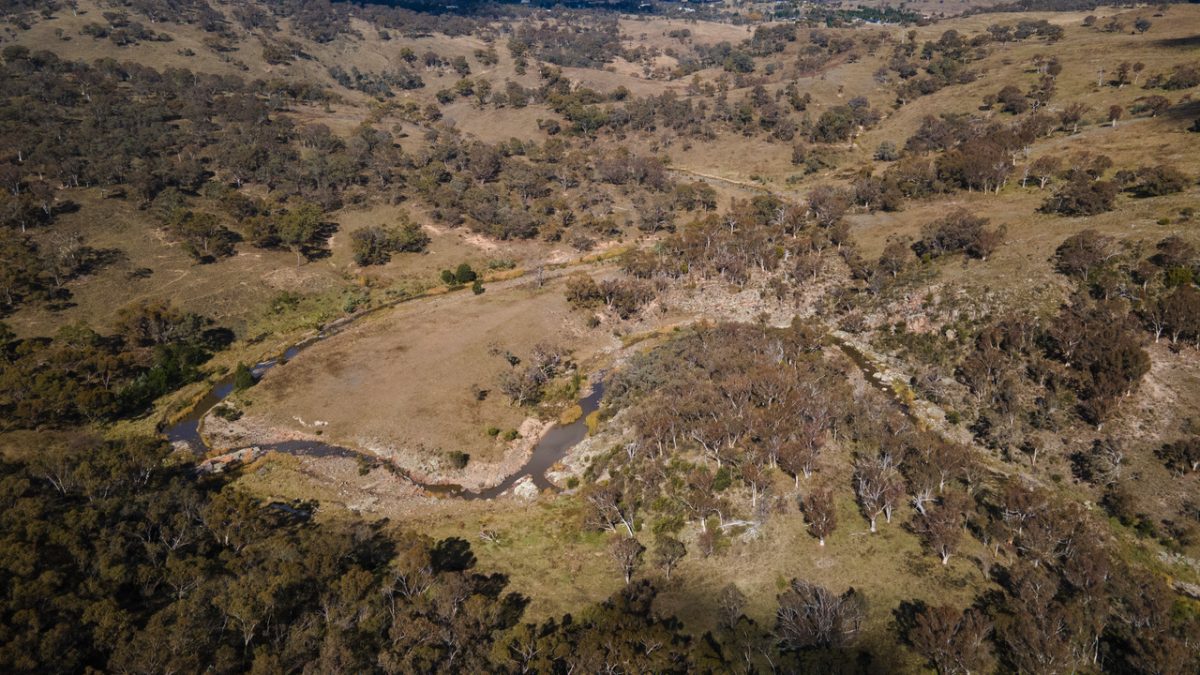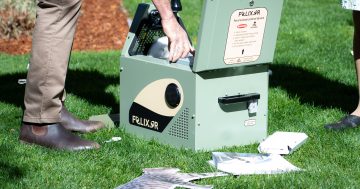
Sandy Hume and Carolyn Larcombe of Wandiyali-Environa Restoration Trust with the CEO of the Australian Wildlife Conservancy, Tim Allard and David Larcombe from the trust after the 10-year collaboration document was signed. Photo: AWC.
The feeling country people have for the land, land that they inherited from their parents and their parents before them, comes from the heart and seems to be more often hidden than brought to the fore.
It’s not like the family considers it their land, rather, they see themselves as custodians of it, caring for it till the next generation comes along.
It’s the most emotional of connections, and this was seen earlier this week on a property outside Queanbeyan, Wandiyali, cared for by the Larcombe family stretching back three generations to 1924.
Members of the family, friends and neighbours gathered under the gum trees to witness an agreement between the Larcombes and the Australian Wildlife Conservancy (AWC) to restore the family-owned Wandiyali-Environa Wildlife Sanctuary.
Located at the intersection of Ngambri, Ngarigo, Ngunnawal and Ngunawal country, the sanctuary consists of 300 hectares of open woodland and grassland communities, including a significant patch of critically endangered box gum grassy woodlands. It protects habitats for threatened species, including the swift parrot, gang gang, pink-tailed worm lizard and small purple-pea, and a section of Jerrabomberra Creek.
Under the agreement, AWC will help shape conservation plans for the sanctuary, including a strategy for restoring locally extinct species. Small mammals including bandicoots, antechinus, bettongs, quolls, and several species of native rodents, as well as threatened frogs, will be among the species assessed as candidates for reintroduction.
The agreement, according to Carolyn Larcombe, has been a long time coming, and the actual signing of the document was not without emotion.
“I’ve lived here all my life,” Ms Larcombe said. “My grandfather bought land here in 1924, land that was then the new boundary between the ACT and NSW.
“He was a surveyor and a visionary,” she said. “Our story started here for me and my brothers when my parents moved to Environa in the late 1960s and ran sheep and cattle.”
But, moving forward, Ms Larcombe said, they realised there were threatened species on the eastern side of Jerrabomberra Creek.

The vast Wandiyali-Environa wildlife sanctuary as seen from the air. Photo: Carolyn Larcombe.
“Through various instruments and financing, we’ve been able to put a conservation covenance on the whole of this area and also enclose 300 hectares, including making it feral predator proof.
“This has brought us to the point where I think I have been working towards my whole life – reintroducing threatened species to this area.
“We have supported AWC for 20 years. We’ve just come to fruition where what we have here suits them and what they can bring into this partnership is amazing for us.”
Significant conservation work has already been undertaken at Wandiyali to help native vegetation recover and increase biodiversity. With funding from the Federal Government’s Environmental Restoration Fund, a 9.9-kilometre fence has been built to exclude feral cats and foxes as part of a “safe haven” project.
AWC Chief Executive Tim Allard said the fence was critical for projects like Wandiyali.
“We know that for a whole host of small mammals, feral cats and foxes are the number one threat to their survival. Working together at Wandiyali, we have the opportunity to apply best-practice conservation in this beautiful landscape and turn things around to actually increase the biodiversity that’s here.”
Original Article published by Sally Hopman on About Regional.














